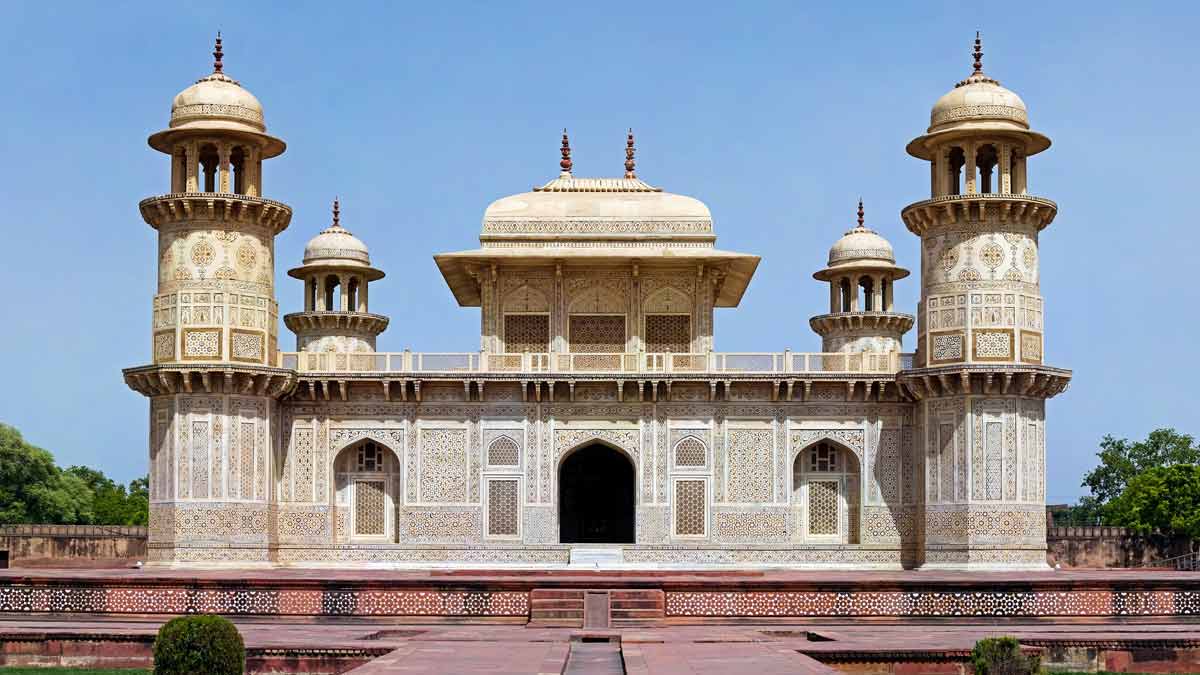
Women's Day 2024: Check Out These Top 5 Indian Monuments Built By Women
India is a land of rich cultural heritage, adorned with magnificent monuments that stand as testaments to its glorious past. While many of these architectural marvels were commissioned by kings and emperors, there is a lesser-known narrative of women who had the power and influence in shaping the architectural landscape of India. These empresses not only ruled with grace and authority but also left behind enduring legacies in the form of grand monuments. In this article, we will tell you about the stories of Indian monuments built by women that are worth the visit for everyone:
1. Taj-ul-Masajid, Madhya Pradesh

Image credit: Wikipedia
Taj-ul-Masajid means ‘Crown Among Mosques’. Taj-ul-Masajid is one of the largest mosques in Asia according to the district Bhopal’s website. Construction of the masjid commenced between 1868-1901, under the initiative of Sultan Shah Jehan Begum of Bhopal. The structure is one of the best examples of the Mughal architectural style and is sometimes compared to Jama Masjid in Delhi. Its expansive pink exterior, vast courtyards, sleek marble floors, and intricately arched roof collectively contribute to its grandeur and elegance.
2. Itimad-ud-Daulah, Agra

Image credit: Agra Tourism
Gracefully situated along the serene banks of the Yamuna River, the tomb of Itimad-ud-Daulah stands as a breathtaking testament to Mughal architectural finesse. Commissioned by the famous Mughal empress Nur Jahan, this magnificent tomb exudes an aura of timeless beauty and glory. Originally intended to be crafted in silver, Nur Jahan's foresight led her to opt for the enduring elegance of marble, safeguarding the structure. What's special about this monument is that it was one of the first to be made of marble, which became very popular afterward, replacing the older red sandstone style.
1
2
3
4
3. Virupaksha Temple, Karnataka

Image credit: Wikipedia
Queen Loka Mahadevi, wife of King Vikramaditya II, decided to build this temple following the triumphant military campaigns in Kancheepuram. Enclosed within a vast quadrangle, the temple is adorned with numerous small cells or shrines. Its grandeur is further enhanced by a massive gateway at the front and a smaller gate positioned at the rear. As per Karnataka Tourism, "The great hall of the temple has a roof that rests on 16 massive square columns arranged in four rows. These columns have excellently written episodes from the Puranas. It is believed that the Kailasa Temple at Ellora was built on the model of the Virupaksha Temple."
Don't miss: Unveiling Kerala's Spectacular Waterfalls For Nature Lovers
4. Rani ki Vav, Gujarat
Rani ki Vav, constructed in the 11th century under the patronage of Queen Udayamati, stands as a poignant tribute to her husband, King Bhimdev I. This architectural marvel was conceived as a subterranean (underground structures) shrine, a unique expression of reverence for water. Exemplifying the exquisite craftsmanship of the Maru-Gurjara architectural style, the stepwell is a testament to the creativity of its builders. Recognised for its cultural significance, Rani ki Vav was inscribed as a UNESCO World Heritage Site on June 22, 2014.
Don't miss: Women's Day 2024: Top International Destinations That Every Solo Female Traveller Must Visit
5. Humayun’s Tomb, Delhi

Image credit: Wikipedia
Humayun’s Tomb, a popular UNESCO World Heritage Site, was built by the Mughal empress Biga Begum. It holds the distinction of being the foremost among the renowned garden tombs built by the Mughals. As per the Ministry of Culture, "The tomb of Humayun, second Mughal Emperor of India, was built by his widow, Biga Begum (also called Hajji Begum), in 1569-70, 14 years after his death, for 1.5 million rupees. The architect was Mirak Mirza Ghiyath."
For more such stories, stay tuned to HerZindagi.
Also watch this video
Herzindagi video
1
2
3
4